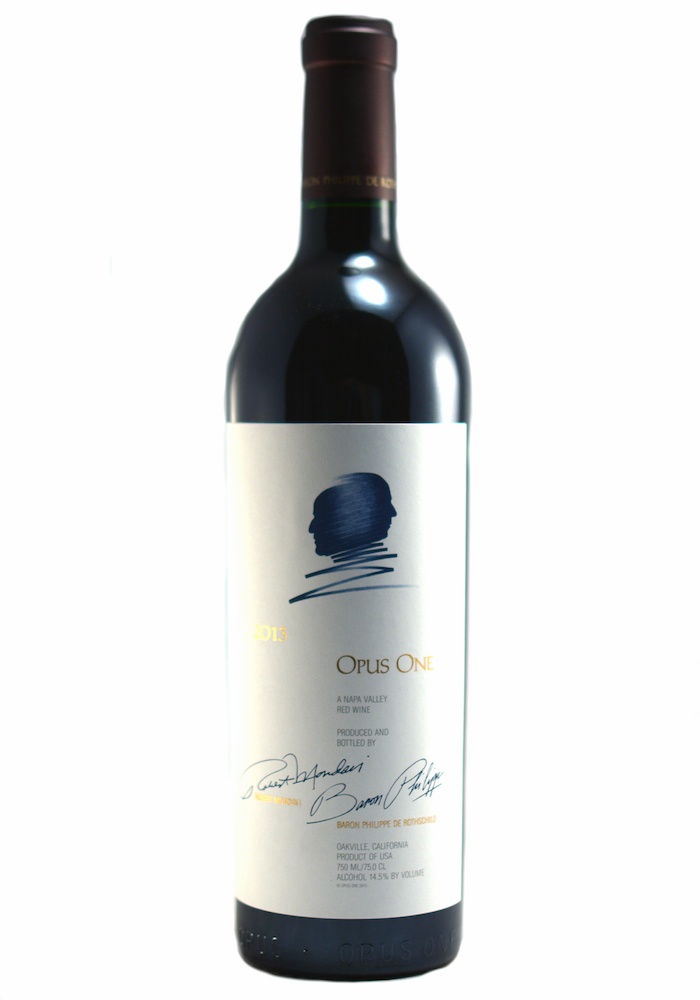

The most famous wine producer in Bordeaux, perhaps the whole of France, Baron Philippe de Rothschild had an innovative thought in 1970. Announcing the launch of the collection earlier in November, Jamie Ritchie, CEO and president Americas and Asia for Sotheby’s Wine, said: “We believe this is the largest collection of Opus One ever to appear on the market." Sotheby's reported that there had been "multiple offers" for the 600 bottles, but the purchase by a Chinese buyer suggests that collectors in the Far East are looking beyond Bordeaux and Burgundy to source fine wine. The final deadline for buyers was Wednesday, November 20, after which the 100 cases – ranging from the 1997 vintage to 2005 – were to be offered separately. The team at Sotheby's New York store also threw in an extra incentive: a private tour of Opus One followed by a dinner for six. Initially on sale for five days only, there were no bites for the $165,000 collection and the offer was extended for another five days. It took a private dinner and an extension to the limited-period offer, but a lover of Napa cab has spent big bucks on a stellar collection.Ī buyer from mainland China has purchased a 100-case collection of Opus One, the retail arm of Sotheby's has revealed. © Opus One/Sotheby's | One hundred cases of Opus One have been sold by Sotheby's New York Instant Collection of Opus One Sold for $165,000 Opus One CEO David Pearson said the expansion is designed by Scott Johnson, who designed the original winery. (NVR) “It’s very obvious the changes proposed will not be visible from the passersby on Highway 29,” Basayne said. He noted the architectural firm that designed it also designed San Francisco’s Transamerica pyramid. New structures would be built to the rear of the winery.Basayne said the appearance of Opus One is iconic. The winery also asked to expand its 80,000-square-foot winery by 51,906 square feet for a fermentation tank room, barrel preparation area, storage, conference rooms, offices and other uses. It wants to change its permit so it can produce up to 250,000 gallons annually, a county report said. Despite the limit, it produced 170,590 gallons in 2012 and 116,580 gallons in 2015. Opus One is permitted to produce up to 110,000 gallons of wine annually. Green lawns slant upward to meet the walls of the front building, which seems to be rising out of the earth with some of the landscape still clinging to it. Located in Oakville in the heart of Napa Valley, the winery makes only one wine.The building itself opened in 1991 and is one of the more striking sights along Highway 29.

Wine legends Robert Mondavi and Baron Philippe de Rothschild founded Opus One in 1979. “I think it is a well-designed change for this winery that is minimally impactful,” Commissioner Michael Basayne said before the commission granted unanimous approval. Opus One wins expansion approval - Opus One winery convinced county Planning Commissioners on Wednesday that its success warrants doubling wine production and making other changes, despite some public concerns about cumulative impacts. A supremely age-worthy wine, it will delight now and for many years to come.Ĭabernet Sauvignon 80%, Petit Verdot 9%, Cabernet Franc 5%, Merlot 5%, and Malbec 1% The fine-grained, plush tannins evolve into a long, supple finish. This seductive wine shows flavors of black cassis, black cherry and a hint of cocoa powder. The juicy entry offers a round, silky mouthfeel with just enough acidity to complement the satin texture.

The Opus One 2017 offers a harmonious aromatic balance of rich dark fruit, stems of roses, and earthy forest floor. Superb flavors and excellent ripening led to an earlier than expected harvest, which commenced on the 5th of September. Despite Mother Nature’s variability, favorable weather in August provided optimal conditions for fruit development and maturation. The summer, in turn, was warm and punctuated by occasional heat waves. Increased soil moisture allowed for healthy vine growth and development. The abundant rainfall continued into March, causing a modest delay in budbreak, and pushing bloom back by two weeks. The winter of 2017 ended a five-year drought with January recording the most rainfall in over 20 years.


 0 kommentar(er)
0 kommentar(er)
